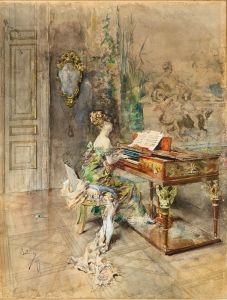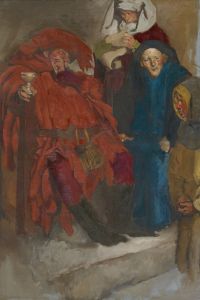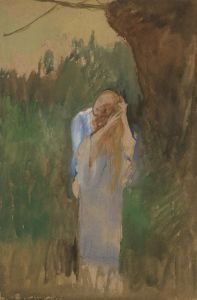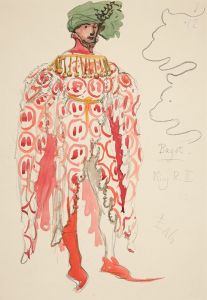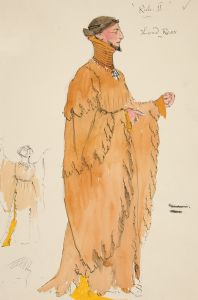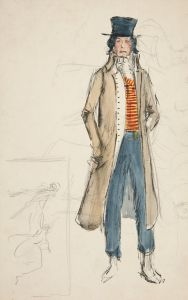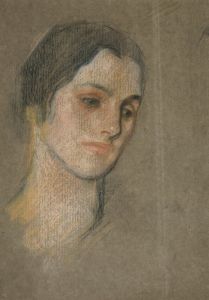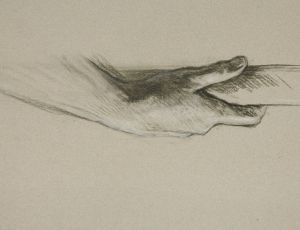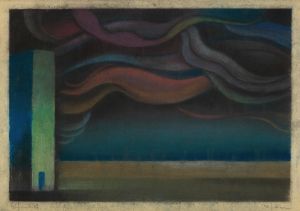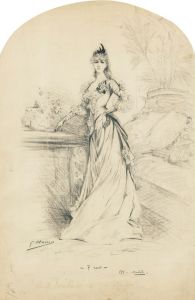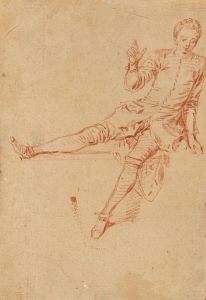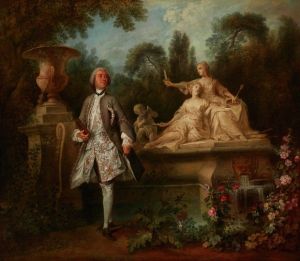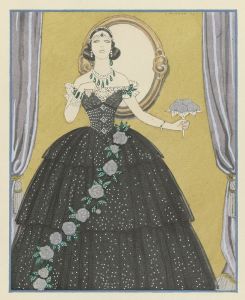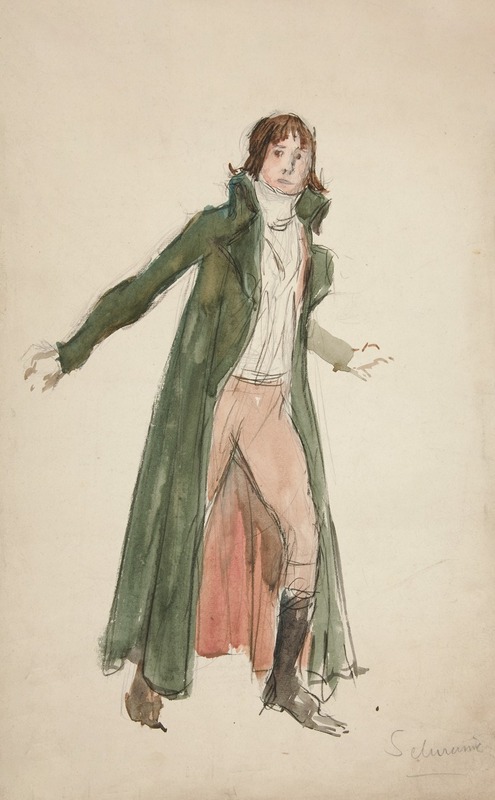
Sketch of a young man – study for illustration to a play
A hand-painted replica of Edwin Austin Abbey’s masterpiece Sketch of a young man – study for illustration to a play, meticulously crafted by professional artists to capture the true essence of the original. Each piece is created with museum-quality canvas and rare mineral pigments, carefully painted by experienced artists with delicate brushstrokes and rich, layered colors to perfectly recreate the texture of the original artwork. Unlike machine-printed reproductions, this hand-painted version brings the painting to life, infused with the artist’s emotions and skill in every stroke. Whether for personal collection or home decoration, it instantly elevates the artistic atmosphere of any space.
Edwin Austin Abbey was an American artist known for his illustrations and paintings, particularly those that depicted scenes from literature and history. One of his notable works is the "Sketch of a Young Man – Study for Illustration to a Play." This piece serves as a preparatory study for a larger illustration, showcasing Abbey's meticulous approach to capturing the essence of his subjects.
Abbey was born in Philadelphia in 1852 and began his artistic career as an illustrator for magazines such as Harper's Weekly. His work was characterized by a strong attention to detail and a deep understanding of the literary sources he illustrated. Abbey's illustrations often accompanied works by authors such as Charles Dickens and William Shakespeare, bringing their stories to life with his vivid imagery.
The "Sketch of a Young Man" is a testament to Abbey's skill in character study and his ability to convey emotion and narrative through his art. While specific details about the play for which this sketch was intended are not widely documented, it is evident that Abbey invested significant effort into understanding the characters and the context of the play. This sketch likely served as a preliminary exploration of the character's appearance, posture, and expression, which Abbey would later refine in the final illustration.
Abbey's technique involved creating numerous sketches and studies before completing a final piece. This process allowed him to experiment with different compositions and character interpretations, ensuring that the final illustration was both accurate and evocative. The "Sketch of a Young Man" reflects this process, capturing a moment of contemplation or action that hints at the character's role within the play.
In addition to his work as an illustrator, Abbey was also a successful painter. He moved to England in the late 19th century, where he became associated with the Pre-Raphaelite Brotherhood and developed a close friendship with fellow artist John Singer Sargent. Abbey's paintings often depicted historical and literary themes, and he was commissioned to create murals for public buildings, including the Boston Public Library.
Abbey's contributions to art and illustration were widely recognized during his lifetime. He was elected to the National Academy of Design in 1902 and received numerous accolades for his work. Despite his success, Abbey remained dedicated to his craft, continually seeking to improve his technique and expand his artistic repertoire.
The "Sketch of a Young Man" exemplifies Abbey's dedication to capturing the human experience through art. While the specific details of the play and character remain elusive, the sketch itself offers insight into Abbey's artistic process and his ability to convey complex narratives through simple yet powerful imagery. Abbey's legacy as an illustrator and painter endures, with his works continuing to inspire and captivate audiences around the world.





